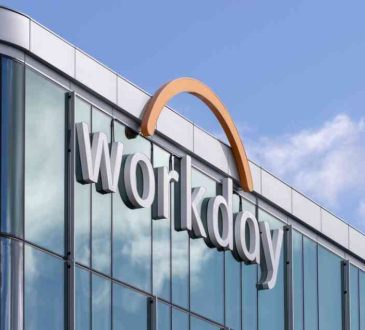What do you need for a successful blended workforce strategy?

The “expertise on-demand” marketplaces. The competition for talent is changing at a speed that we have not predicted. If you are a small or medium enterprise (SME), the traditional way of attracting talent was that you hired the best applicant who responded to your ad. Usually that worked well for you as the employee market was segmented by sector or subsector while the talent demographics was such that you would find the best talent in your sector, conveniently located where your business was located be that in Houston, Aberdeen, Perth or London. But as technology requirements are changing, the employee market landscape is changing too. Ed Glaeser’s research from Harvard shows that highly skilled technology talent lives in specific cities and countries. So how do you access new talent pools to address new and emerging technology, operational or strategic challenges?
Introducing the on-demand marketplaces. Let’s start with the value proposition offering.
Prof. Joe Fuller from Harvard Business School (HBS) who heads up the “Future of Work” project says: “.. innovation at a big company is going to have to take place where you source talent, how you structure processes, so you can get the right talent, at the right place, at the right time, irrespective of employment status.“
These on-demand talent platforms fall mainly under three types:
- Marketplaces for premium talent – such as Cognisium, Toptal, Comatch, Catalant,
- Marketplaces for crowdsource innovation – such as Innocentive, Kaggle,
- Marketplaces for digital talent – such as Fiverr, Upwork, 99designs..
The on-demand experts from these platforms also come with an added benefit: they challenge your status quo, stretch your world view, bring new thinking, insights and possibilities and force you to re-assess institutionalised thinking and dominant logic.
The Drivers for On-Demand Marketplaces
Whether you are an engineering company or a biotech business, you compete for technology talent with JP Morgan Chase, Salesforce, Procter & Gamble, Google, Adobe, and the list goes on. In other words, the fuzzy boundaries between sectors, sub-sectors and industries are gone as the diffusion of various digital technologies into virtually every industry has almost reached a saturation point. Moreover, the talent you need may be located in Tel Aviv, Bangalore, Berlin, Sydney or in Silicon Valley and so, you realise that the best person applying for the job you advertised is not the most suitable for your needs. You then, need to compete for talent asymmetrically in order remain relevant.
As the long term view of the enterprise and half-life of skills are becoming shorter, businesses are under constant pressure to engage in various strategic initiatives that go beyond legacy projects. In other words, businesses need to sense, adapt and if needed, reconfigure capabilities in order to match the pace of innovation, technology adoption and delivery channels that the new markets require.
While legacy projects can be carried out by core full time employees, technology acceleration programs require a blended workforce strategy in order to be effective, let alone efficient. A recently released report by the prestigious World Economic Forum titled “Future of Jobs 2020” shows that 43% of businesses surveyed plan to reduce their core workforce due to technology integration, while 41% plan to expand their use of freelance contractors. Another report by HBS titled “Building the On-Demand Workforce” surveyed over 700 large US companies and within this sample, 68% were C-suite members. One of the findings of the report was that over 90% of C-suite participants viewed marketplaces for premium talent as important or very important to their ability to compete into the future.
Pre 2010, the main mechanism to external innovation was via joint ventures, alliances and partnerships. These mechanisms, while still in place, are difficult to run, cumbersome to exit and not cost effective when compared to what the business can now achieve internally via venture accelerators, talent on-demand workforce adoption, innovation labs or corporate venture capital.
If I were to summarise the main drivers that lead to adopting a blended workforce view, these would be:
- Global access to talent at scale: shrinking and forcing businesses to compete asymmetrically,
- The need to compete in high velocity markets,
- The requirements for labour force flexibility in order to experiment and innovate quickly and more efficiently,
- External innovation changes toward internal innovation labs, accelerators and talent on-demand workforce adoption.
Another aspect that is increasingly talked about and summarised in a captivating article in Forbes by fellow activist Jon Younger, is the place of freelance executives within the on-demand marketplace arena. Companies like Cognisium, Talmix and Comatch – to name just a few – are seeing a demand for these types of talent. If you are an SME, then you know that reaching escape velocity is not easy. Data alone do not create competitive advantage; what creates competitive advantage is the manner in which you extract, synthesise and action intelligent decisions along the business continuum. You may not have the resources to attract a full time executive but, by using the on-demand marketplaces you can “slot in” the right person at the right time and in the right place in the organisation so that they can impart knowledge and help the business succeed. The freelance executive experts are in general, professionals with deep domain expertise who have already built successful careers and who feel passionate about sharing knowledge in order to give less experienced teams a competitive edge.
It is true, businesses need to adapt to what is seen as a steep and rapid trajectory of change, but re-thinking the employee value proposition through the adoption of talent on-demand may lead to long lasting strategic and operational benefits.
The Supply and Demand
In September 2020, 56 million Americans performed some form of freelance work. That represents a staggering 36% of the total workforce in the US.
Supply wise, for those complex and highly specialised tasks or daring technology-led initiatives, businesses realise that global talent is cheaper and in many cases more qualified than the core workforce. Significant shifts in talent pools, in particular given by choices of single parents, female employment and executive freelancing, provide these marketplaces with ample supply of highly qualified talent.
A 32% of employees, mostly women, left full time employment in 2019-2020 because of care responsibilities. This is exacerbated by the fact that in the US, 23% of children were living with a single mother in 2020, up from a mere 8% in 1970’s. Despite the fact that women in the US, possess a master or a doctoral degree at a higher rate than men, they are involved in care responsibilities at a disproportionate rate when compared with their male counterparts. The cheap access to technology and tools enables top talent to run a successful and lucrative venture from home. The changes brought by COVID to the “delivery of work” psyche, are in line with what freelancers see as a relatively solid and enjoyable source of income for the future. They are in full control of their work-life balance. The COVID disaster accelerated the supply of highly skilled freelancers through the digital and premium marketplace platforms.
Over the past decade, certain societal structural forces are at work and as a result, full time employee arrangements are getting shorter. An interesting outcome from the HBS surveys was the fact that the freelance tech workers have a healthier understanding of what success means. They think and feel that the most important thing for them is to get leading edge experience via multiple projects and geographies so that they can remain relevant and marketable. They also engage in self-learning by a considerably higher margin when compared to the full time workers and feel that they are solving more exciting, diverse, more difficult problems than what a full time job would offer.
Still on the supply side, the latest study from Boston Consulting Group shows that for the first time, the number of freelancers who consider working through marketplace platforms a log term career, is the same as the number of freelancers who consider it a temporary avenue for deriving an income.
Demand wise, companies find that they need to conduct business remotely in geographies where talent demographics, in particular in the technology field are scarce. One of the benefits of embracing the latest digital technologies is allowing businesses to recruit and run talent remotely despite obvious challenges posed by re-thinking work processes, segmentation of work and cultural transformations. Small enterprises can now access superior top level expertise that was simply unavailable to them 10 years ago. If you are a small enterprise in Oklahoma City, you can hire a machine learning expert from Berlin or Tel Aviv at a fraction of the cost when compared with Silicon Valley or Boston. If you are looking for former program executives in very specialised sectors such as defence or biotechnology but your headquarters are in Athens or Wellington, you can engage remotely with experts in Australia, Israel or the US and co-opt them to lead discrete packages of work for which internal expertise is not available.
Over the past decade or so, as the diffusion of new technologies accelerated rapidly, the resultant time to market and relevancy of services shortened. Schumpeter’s creative destruction is on full display and permeates through big and small companies alike.
Hence a new corporate-led approach to competitive advantage and a re-envisioning of the business is needed not just to reduce cost and close the urgent skills gap, but also to execute strategy with a “blended workforce” that is able to place the right skills in the right place at the right time.
For instance, NASA and Freelancer.com who started their partnership in 2015, have crowdsourced solutions from 3D tools for robotic astronauts to smartwatch mobile applications. Freelancer.com has won the Joint NASA Open Innovation Services 2 contract to assist NASA to crowdsource talent and innovative tools and technologies. AstraZeneca used InnoCentive to solve a delivery issue associated with the DNA or RNA molecules used in research, while Enel engaged with InnoCentive’s freelancers to solve problems that enabled them to meet the UN’s 2030 Sustainable Development goals. In all these cases, an open innovation approach provided these companies with a low cost effective solution to highly technological problems.
So when you browse job boards and see jobs such as “Head of Creative Delivery” (a real Microsoft role) or “Blended Workforce Expert” you know what that entails.
The role of the modern full time employee will change toward adopting a more strategic and system-type thinking for the business in the detriment of highly specialised tasks that can easily be carried out by on-demand experts when and as required.
It is my conviction that by 2025, a robust blended-workforce-led strategy will be the new norm, whereby the core full time employees will become connectors of know-how, champions of collaboration and builders of social capital and collective intelligence.
These changes need to be explicit, intentional and systemic and with the support of the C-suite.
The evolution of talent transformation
Turning to on-demand marketplaces for help is not a trivial thing but those who embrace the freelancer revolution, will most likely have a competitive edge. A number of challenges, not insurmountable, need to be addressed when a business starts to engage more strategically with marketplaces on-demand. These challenges are largely around people, processes and technology.
I believe that the full time employee value proposition needs to change. Here, the leadership’s role in explaining the new competitive landscape and what is expected from the employee of the future are both crucial. The core employee value proposition will entail a re-envisioning of their role in the company. They will become enablers of specialised work, and connectors of work packages and initiatives in order to deliver more scalable and profitable results.
As a result, a cultural shift will also need to take place so that the incoming on-demand experts be viewed not as a threat but as part of a blended workforce strategy geared for optimum quality and delivery. Businesses are also well advised to be “humbler” as Ernesto Ciorra, Enel’s Chief Innovability Officer” pointed out in an article by Joe Fuller (HBS) and Allison Bailey (BCG) where he said that “the best ideas usually lie outside the company”.
In so doing, businesses must embrace ambidextrous leaders, those who are comfortable with delivering outstanding outcomes for the short term (exploitation phase), as well as delivering superior strategic positioning for the long term (exploration phase). These leaders must think strategically in terms of how they re-package the work in discrete parts for seamless delivery by core and on-demand employees working symbiotically and optimally. The C-suite will become a more effective creator of collective intelligence and as a result these leaders will end up with co-creators rather than just followers.
All these changes need to be reflected in well thought out, clear and concise work policies and procedures so that the enterprise has the ability not only to execute but also to capture know-how for institutional purposes.
Commentary by Dr. Dorel Iosif. Here’s what you’ve missed?
World’s Most Powerful Countries.
World’s Best Countries For International Students.
World’s Most Influential Countries.
Add CEOWORLD magazine to your Google News feed.
Follow CEOWORLD magazine headlines on: Google News, LinkedIn, Twitter, and Facebook.
Copyright 2024 The CEOWORLD magazine. All rights reserved. This material (and any extract from it) must not be copied, redistributed or placed on any website, without CEOWORLD magazine' prior written consent. For media queries, please contact: info@ceoworld.biz








